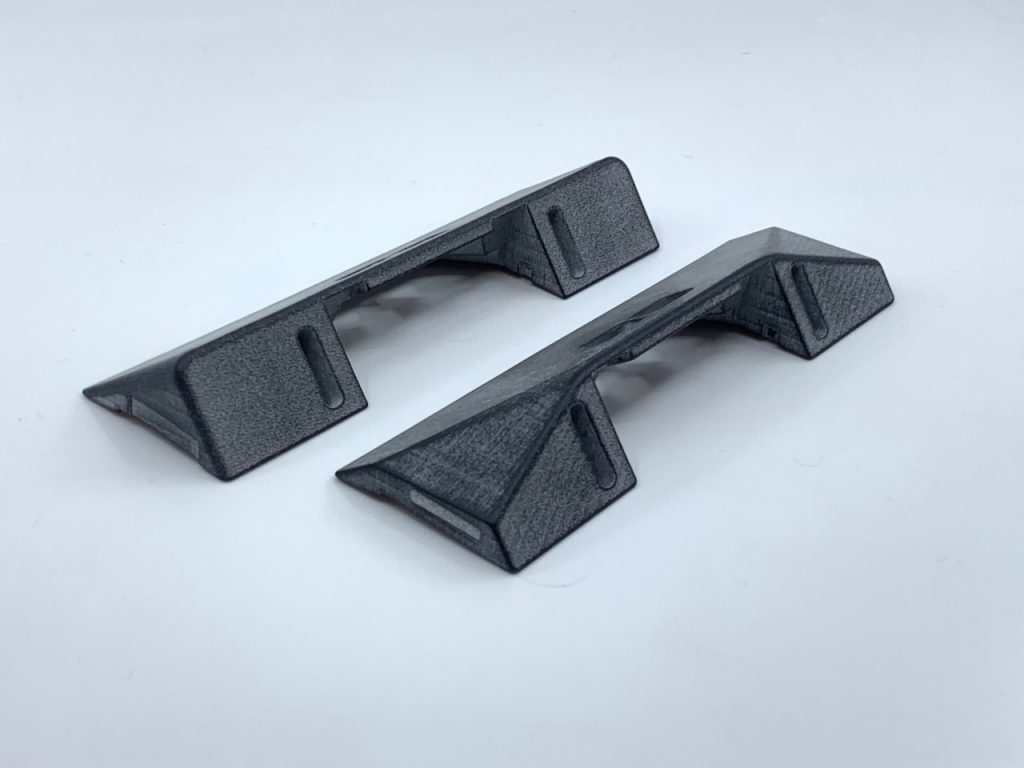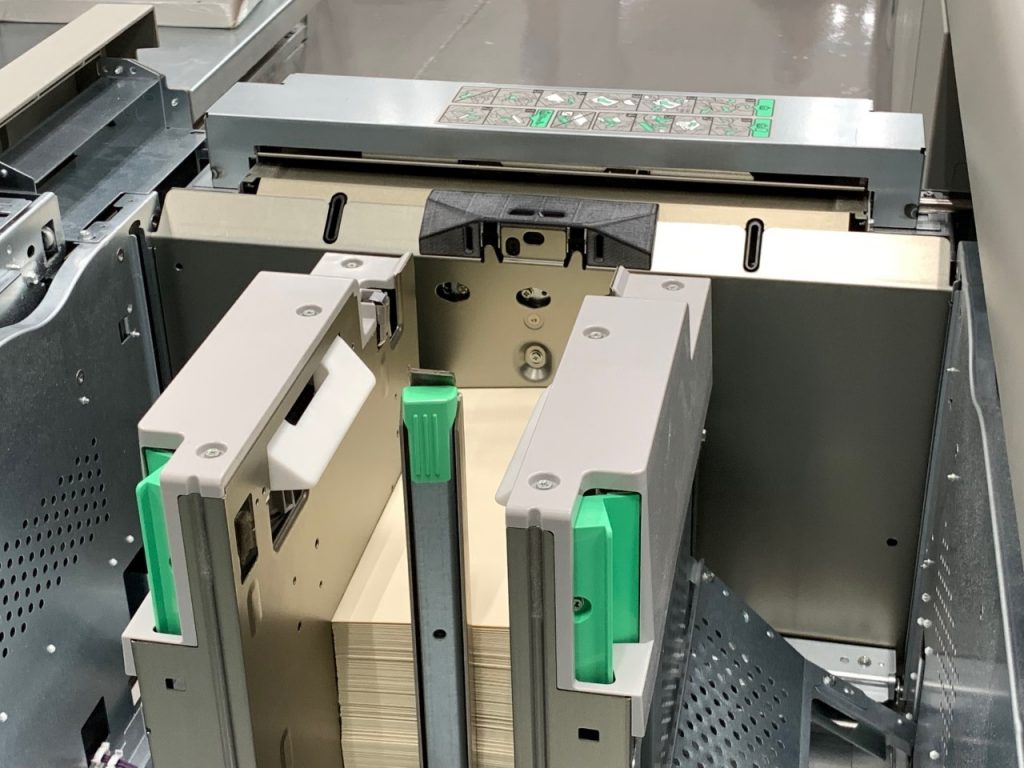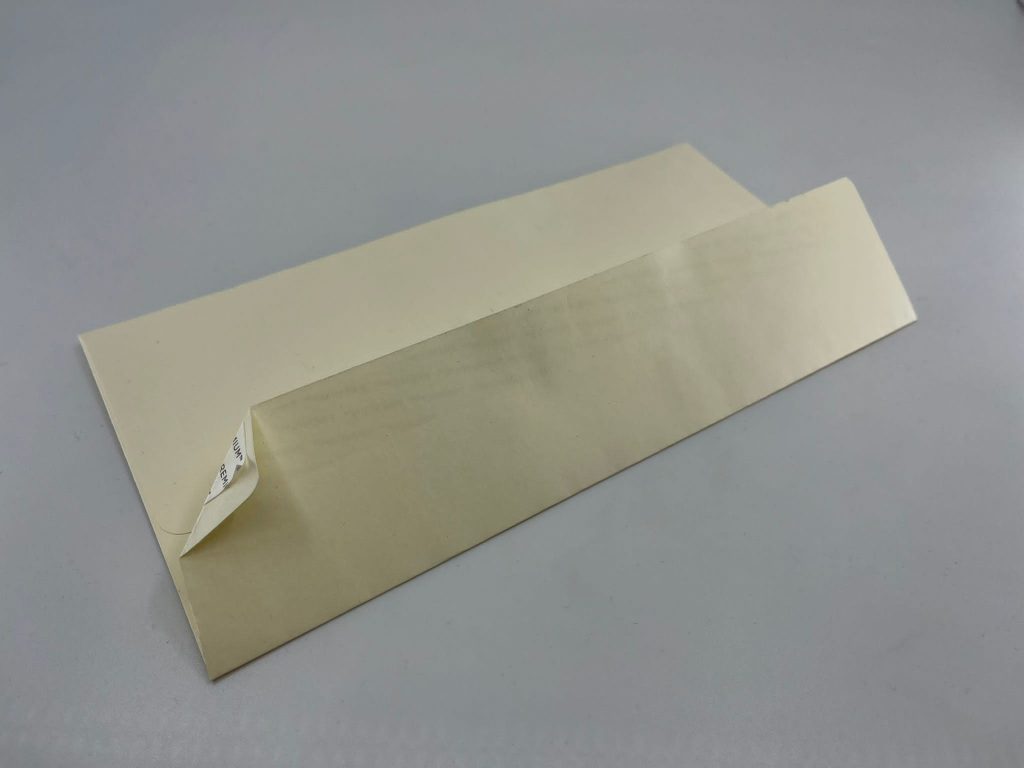Improving performance with 3D Printing
How Ricoh UK Products Limited (RPL) utilised its Additive Manufacturing team to help keep customers ahead of the market…
As part of the wider Ricoh family, Ricoh’s additive manufacturing team has been able to provide its services to support colleagues across our wide range of business areas.
When the Ricoh UK Solutions team approached Ricoh 3D with a proposal to modify some printing hardware, the team was more than happy to step in to engineer a successful fix.
Background
Ricoh UK’s print service hardware supports the needs of customers across the globe, but with the evolution of media, modifications and evolutions to the hardware are sometimes required to ensure that they can continue to produce successful products for customers
Ricoh UK’s CEC Engineering team exists to ensure that any media required is qualified before the customer receives their order of hardware. This team knows everything there is to know about media, from the variety of envelope sizes to the number of different paper grades on the market.
A jig had previously been created to help overcome an issue caused by a machine limitation. The Large Capacity Trays (LCTs) on the printers have a limit on the shortest length of media that can be fed (139.7mm/5.5”).
Customers in Europe tend to use two popular envelopes (DL and C6) that fall within that 139.7mm threshold. To overcome the issue, these are instead fed via the Short Edge Feed (SEF), with the flap at the side, rather than Long Edge Feed (LEF), flap first, which is the standard.
This modification sometimes caused the flaps to catch on the LCT feed nozzle (RT5120 LCT), causing damage to the flap or non-feed jams. The solution for this issue was the creation of an envelope feeding jig, which was designed in 2018 to stop the flap from impacting the LCT feed nozzle by gradually closing the flap as it feeds.

The Issue
In 2020, Ricoh USA received feedback that some customers had begun to experience issues with the jig while using some types of popular envelopes. They reported dog-earing and paper jams: The very issues that the jig had been designed to alleviate.
The envelopes in question were A2 (111x146mm with a flap size of 57mm) and A7 varieties (133x184mm with a flap size of 63mm) – sizes not typically used in Europe and therefore, was out of scope for the original jig.
Ricoh Canada also reported that multiple customers were experiencing problems with #9 envelopes (101x228mm) and #10 envelopes (104x241mm), while using RPL feeding jig.
The cause of the issue was an increase in the size of the envelope flaps, which tended to be up to double the size (49mm up to 63mm) of those in Europe (35mm). This change in the specification of the media required a modification to our machines to ensure they could keep pace with the changes and the requirements of customers.
The increase in envelope flap sizes wasn’t just an international issue: UK manufacturers were also utilising larger flap sizes on their envelopes, with Blake Envelopes (UK), producing 49mm flaps in order to remain competitive in the premium stationery market.
It was clear that these enhancements and developments in the marketplace required swift action from Ricoh UK to keep up with the changes.

Development
The proliferation of customers who were experiencing problems with the envelope feeding jig required us to relook at its design and a plan was formulated to combat the issue.
Andy Wheeler, media qualification technician with the Customer Experience Centre at RPL, said: “We knew that the jig needed to be modified to suit this new frontier of media being used by our customers. We also wanted the solution to be cost-effective for customers, with no minimum order quantities.
“Our customers deserved a modification that worked and didn’t break the bank – and that is just what we did.”
The gauntlet was thrown down to Ricoh UK Solutions to create a jig that would solve the issue of dog-earing and paper jamming, while creating a robust, cost-effective solution.
Three designs were developed by Ricoh UK Solutions and printed using additive manufacturing – providing cost-effective prototypes for Andy and his team to test. With both specialisms sharing Ricoh’s site in Telford, it made good sense to share the technology available within the facility.
Initially, three chamfers were tested, measuring different gradients, to push the larger envelope flaps down before they entered the feeder. Following feedback from Ricoh USA on a similar jig that had been produced by Ricoh Company Limited (RCL) in Japan, which featured a completely square edge, the design team modified the jig and produced a fourth prototype, which was 3D printed and supplied for testing.

Results
“The new jig worked like a dream”, commented Andy, who tested the square-edge jig with larger flap envelope formats. “We were able to overcome the issues thrown up by the modifications in media on the market and provide customers with a low-cost fix to enable them to keep up with these developments.
“What’s more, thanks to the use of Ricoh 3D in the production of the jigs, we were able to remove any minimum order quantities for customers, demonstrating real value for money.”
Richard Minifie, Senior Design Engineer for Ricoh 3D, worked closely with Ricoh colleagues to manufacture the jig concepts. Richard said: “This is a prime example of where 3D printing can provide agile and cost-effective solutions to businesses.
“In this case, we worked collaboratively with colleagues across a number of Ricoh areas to create a sustainable solution that fulfils the needs of our printing business.”
He added: “Ricoh 3D now supplies the jigs on a regular basis, utilising the digital inventory system to ensure there are enough parts available to supply demand, without taking up vital storage space. This project has showcased best practice in collaborative working and we are very proud of what all the teams have achieved by coming together to overcome an issue to improve customer experience and enable them to move with the times.”
To learn more about how Ricoh 3D can support your business, contact our team today and follow us on LinkedIn for more news and updates – @Ricoh3D.